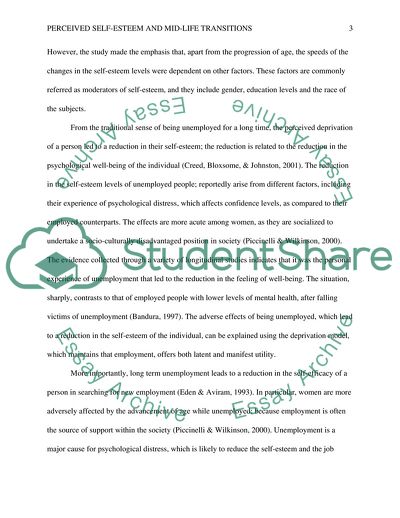Cite this document
(Perceived Self-Esteem Effecting Transitions in Mid-Life Intersecting Literature review Example | Topics and Well Written Essays - 1500 words, n.d.)
Perceived Self-Esteem Effecting Transitions in Mid-Life Intersecting Literature review Example | Topics and Well Written Essays - 1500 words. https://studentshare.org/psychology/1819131-perceived-self-esteem-effecting-transitions-in-mid-life-intersecting-with-gender
Perceived Self-Esteem Effecting Transitions in Mid-Life Intersecting Literature review Example | Topics and Well Written Essays - 1500 words. https://studentshare.org/psychology/1819131-perceived-self-esteem-effecting-transitions-in-mid-life-intersecting-with-gender
(Perceived Self-Esteem Effecting Transitions in Mid-Life Intersecting Literature Review Example | Topics and Well Written Essays - 1500 Words)
Perceived Self-Esteem Effecting Transitions in Mid-Life Intersecting Literature Review Example | Topics and Well Written Essays - 1500 Words. https://studentshare.org/psychology/1819131-perceived-self-esteem-effecting-transitions-in-mid-life-intersecting-with-gender.
Perceived Self-Esteem Effecting Transitions in Mid-Life Intersecting Literature Review Example | Topics and Well Written Essays - 1500 Words. https://studentshare.org/psychology/1819131-perceived-self-esteem-effecting-transitions-in-mid-life-intersecting-with-gender.
“Perceived Self-Esteem Effecting Transitions in Mid-Life Intersecting Literature Review Example | Topics and Well Written Essays - 1500 Words”. https://studentshare.org/psychology/1819131-perceived-self-esteem-effecting-transitions-in-mid-life-intersecting-with-gender.


